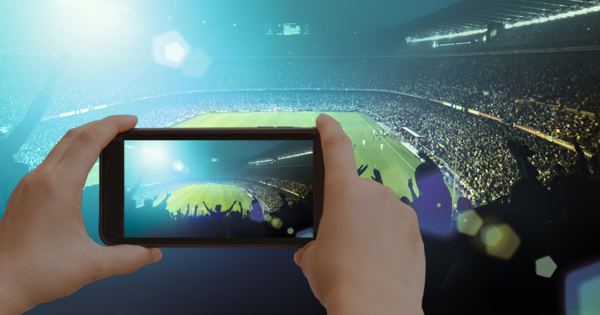 Across most parts of the world, lockdowns are easing and life is returning (cautiously) to normal. Of the many mass gatherings we have missed, many would say that it’s the thrill of live sports that has been most sorely missed. Sports organizers and associations are preparing to restart major sporting events with capacity crowds in attendance. From the Olympics to baseball to football matches, more spectators will be sporting new 5G-enabled mobile devices—and they will want to share their experiences with those at home more than ever.
Across most parts of the world, lockdowns are easing and life is returning (cautiously) to normal. Of the many mass gatherings we have missed, many would say that it’s the thrill of live sports that has been most sorely missed. Sports organizers and associations are preparing to restart major sporting events with capacity crowds in attendance. From the Olympics to baseball to football matches, more spectators will be sporting new 5G-enabled mobile devices—and they will want to share their experiences with those at home more than ever.
5G transforms the sports experience for fans
Granted, 5G offers lower latency and internet speeds up to 10 times faster than 4G connections, but 5G networks are inherently more challenging to build in high-density areas and require numerous base station antennas (BSAs) to meet users’ expectations, especially with new 5G applications and services. In a stadium setting, you are looking at tens of thousands of simultaneous, high-bandwidth connections as spectators post to social media, send selfies to friends and families or stream video from the match.
In addition, some venues are already rolling out next-generation virtual reality (VR) and augmented reality (AR) experiences for those in the stands—and this will take a massive amount of bandwidth. In fact, VR experience could have come earlier on a wider scale had it not been for the pandemic. At the NBA in 2018, the Sacramento Kings partnered with Verizon to provide 5G VR viewing of a game to a selected group of fans. In other venues, teams are using AR to provide player statistics and other data via fans’ 5G smartphones.
Filling the need for 5G capacity
5G deployments in stadiums require high sector counts and high spectrum reuse, and at the same time they are particularly vulnerable to PIM and cross-sector interference in the overlapping areas of coverage. You can immediately see how these challenges are exacerbated in a stadium environment; typical circular patterns leave gaps of poor coverage and overlapping areas of interference.
At CommScope, our engineers are more than just RF experts; many are also sports fans who take pride in helping MNOs and neutral hosts connect their spectators with the world. Our engineers applied years of stadium coverage experience to develop and build our latest smart, targeted 5G Stadium BSA solution:
- 5G Stadium BSA solutions feature sharply rectangular radiation pattern envelopes (RPEs), perfect for coverage of seating sections without large areas of sector overlap.
- Their ultra-wide bandwidth means one antenna can support multiple frequencies.
- They support all 4G and 5G bands, including the new 3,5 GHz and 700 MHz 5G bands, tripling capacity and unlocking the bandwidth required for next-gen VR and AR applications.
- They use the same footprint as existing 4G-only stadium antennas and don’t disrupt stadium aesthetics.
The BSA solution is easy to deploy, economical to operate, and delivers true 5G performance to every seat from the nosebleeds to the concourse. Because if there’s one thing CommScope’s engineers love as much as live sports, it’s total coverage and capacity.
My colleague and fellow football fan, Pete Bisiules, recently appeared in a short video explaining how the 5G Stadium BSA solution works and how much it means to him to enhance the spectators’ experience at a game. There are unlimited possibilities for what 5G can deliver. Before the world reopens, how do you envision a sporting event in the 5G world?











